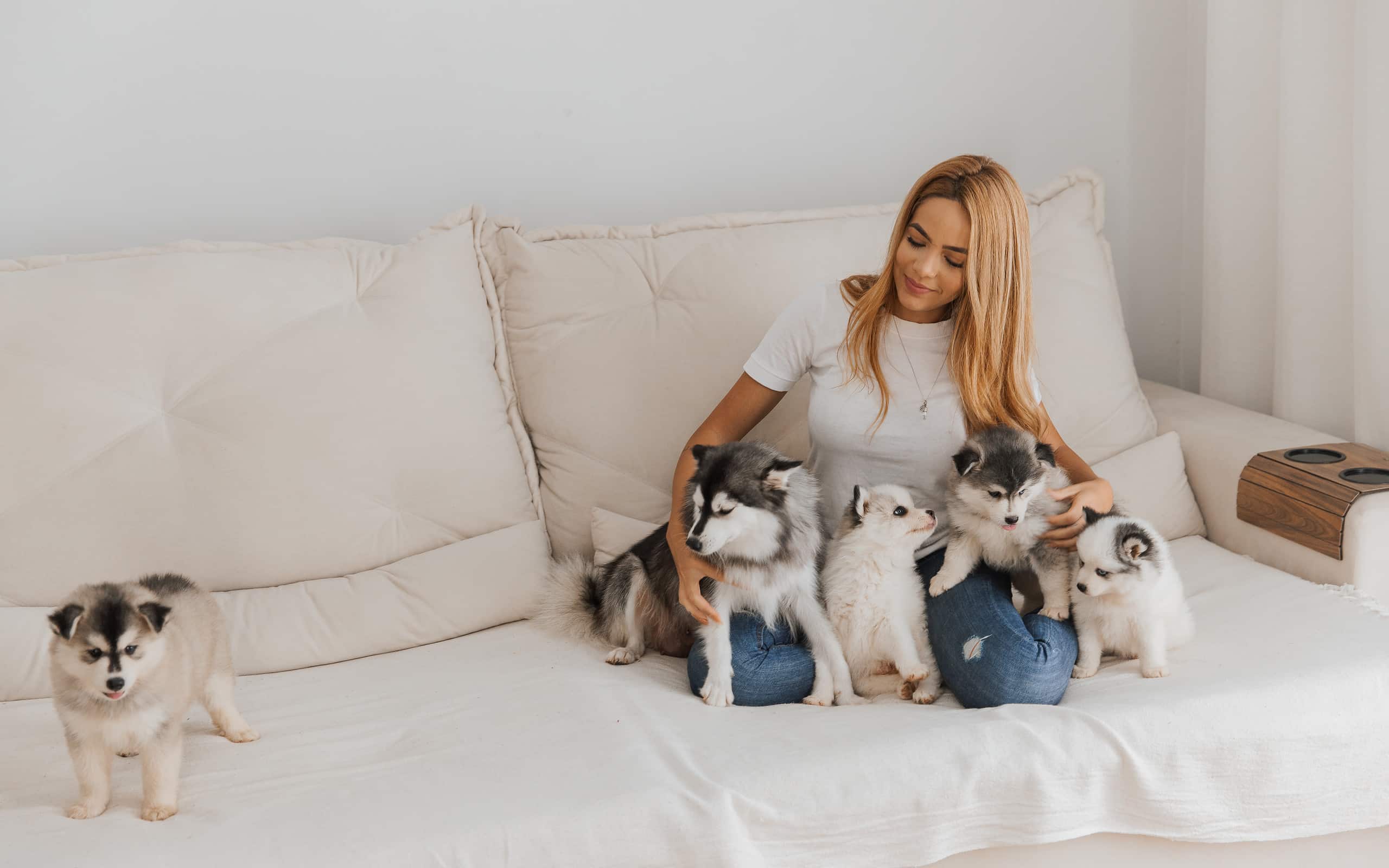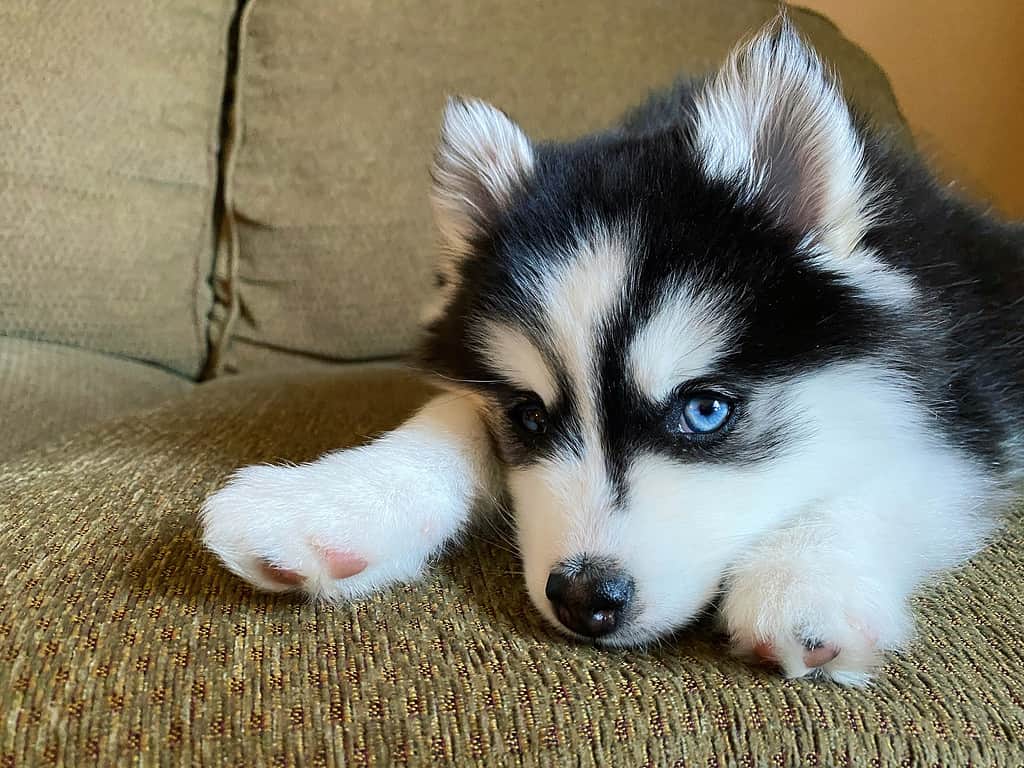
Designer dogs breeds like Pomskies are very popular but expensive.
©Skyler Charbonneau/iStock via Getty Images
Owning a dog is more than just taking care of a pet. Dogs are similar to children. They need constant attention, care, training, and patience so they learn how to behave around others. While some dogs are easier to train, every breed and individual has their own quirks, strengths, and weaknesses. Owners should be aware of breed specific traits and make sure the breed is compatible with their lifestyle.
Recently, a new designer dog breed has quickly become a favorite among families and dog show contestants. The Pomsky is an adorable puppy that is the culmination of a large dog in a small dog’s body.
These puppies are enticing for owners wanting a big dog in a small body, but do they make good pets for everyone? This article will highlight basic information on Pomskies and detail how to care for them.
Pomsky General Information
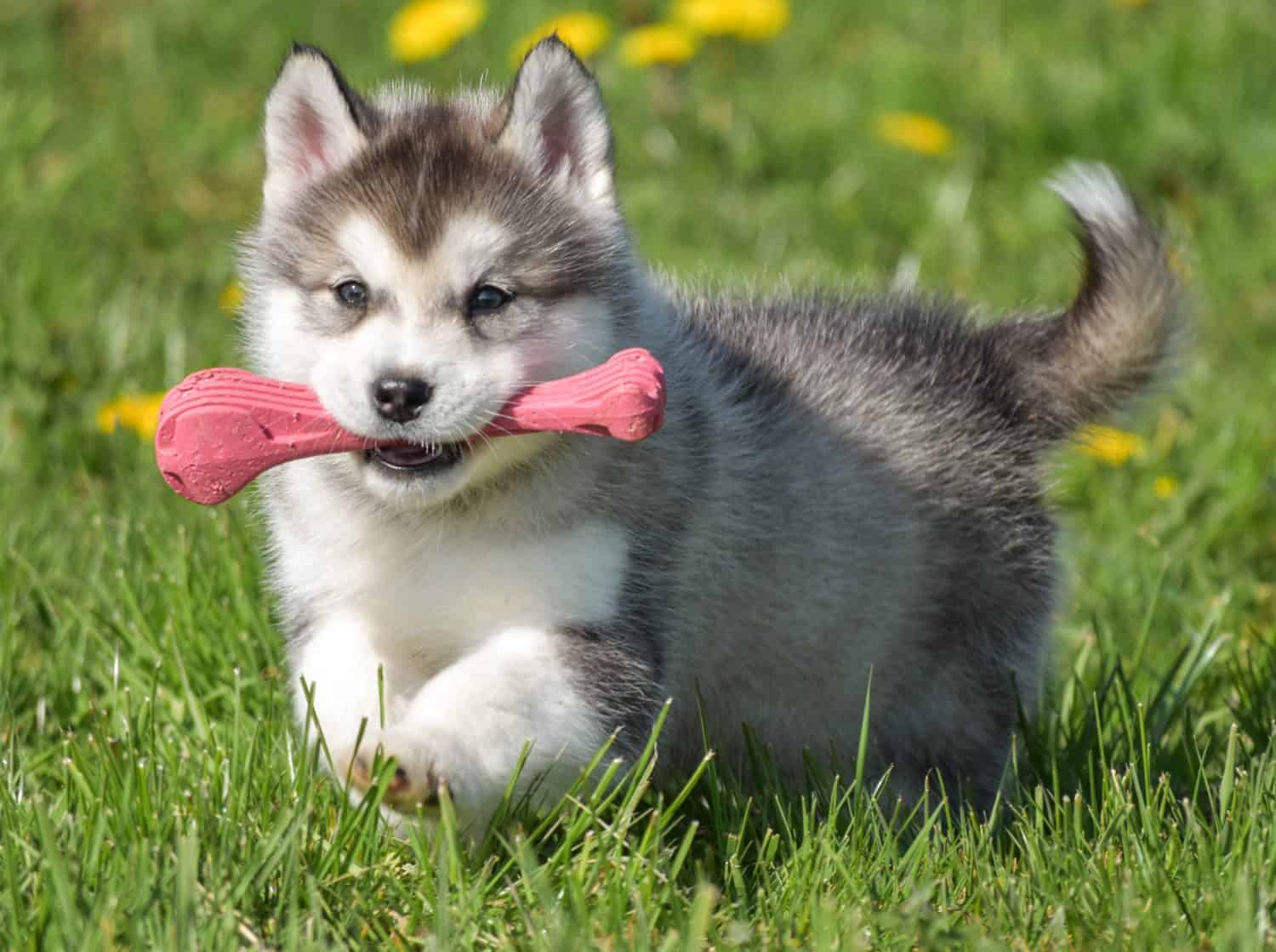
Owners looking to adopt a Pomsky must speak to breeders and get on a waiting list.
©Alina Ziabrieva/Shutterstock.com
Pomskies are a new, designer dog breed originating from the U.S. in 2012. They are a combination of a Pomeranian and a Siberian husky through artificial insemination.
The goal of making Pomskies is to create a dog breed with the markings and facial structure of a husky and the body of a Pomeranian. Puppies will vary with some looking like miniature huskies while others will have a Pomeranian coat and face but the coloring of a husky.
Pomskies can weigh between seven to 38 pounds and reach 10 to 15 inches tall. On average, they live 12-15 years.
The most desirable Pomskies are puppies with:
- Black and white coat
- Silky coat of a husky
- Facial structure of a husky
- Size of a Pomeranian
Caring for a Pomsky
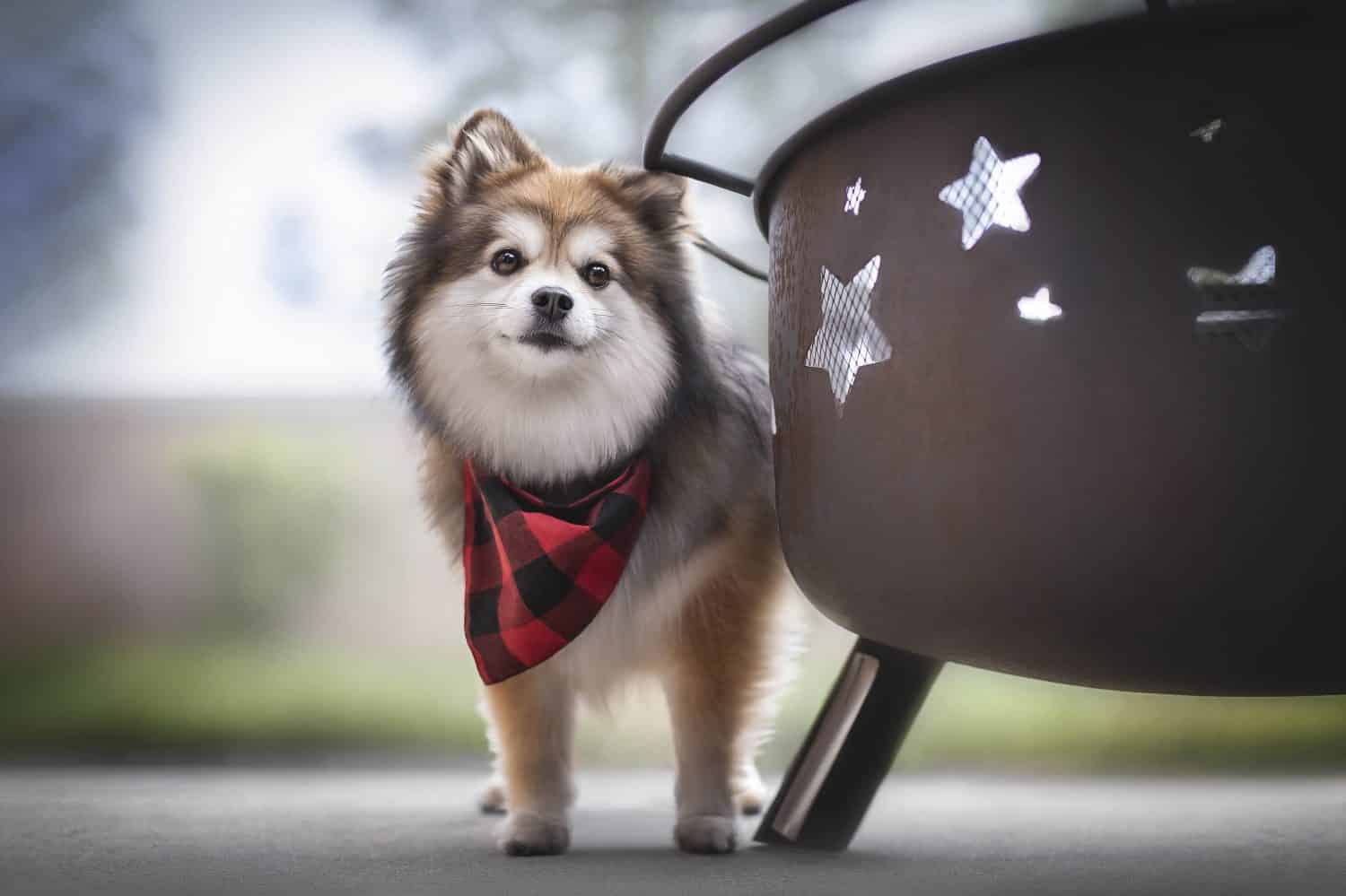
Depending on the genetics, a Pomsky can be a small or medium-sized dog.
©Elizabeth.Kim/Shutterstock.com
Pet owners must be thorough with caring for the Pomsky puppies. Generally, these dogs require the same level of attention, love, and care as any other dog breed.
Temperament
Pomskies are highly energetic and playful dogs. Huskies and Pomeranians are both playful dogs, with huskies being capable of running miles in competitions in severe weather. They are very friendly and loving and have a desire to learn and understand their surroundings.
Owners must love and engage with a Pomsky every day with toys, hugs, kisses, and walks to manage their excitable energy. Bored puppies will find ways to amuse themselves by chewing on furniture or clothing.
Exercise
Pomeranians are small dogs that have a lot of energy and enjoy zipping around the house or chewing toys. Huskies are well-known for running far distances because they have high amounts of stamina. A Pomsky has the energy level of both of its parents in a tiny package.
Owners should walk their Pomsky two or three times a day for 15-30 minutes each. Pet parents can spend more time outside with their puppies to vent out their excess energy. Older Pomskies may not have as much energy for longer walks and should be given short walks to exercise, do their business, and easily return home without straining their legs.
Training
Pomskies are easily trainable because they have the intelligence of huskies. Huskies and Pomskies have an innate desire to learn new things, making it easy for pet parents to teach them commands.
Typically, puppy training should begin once they have their first rabies vaccinations, but some classes provided by Petco and PetSmart begin training at eight or 10 weeks old. Owners must be consistent with the training, provide positive reinforcement, and keep commands simple for the best results.
Pet parents need to be patient with their Pomskies during training. The breed is capable of learning quickly, but it takes time to build a routine they’ll understand.
Grooming
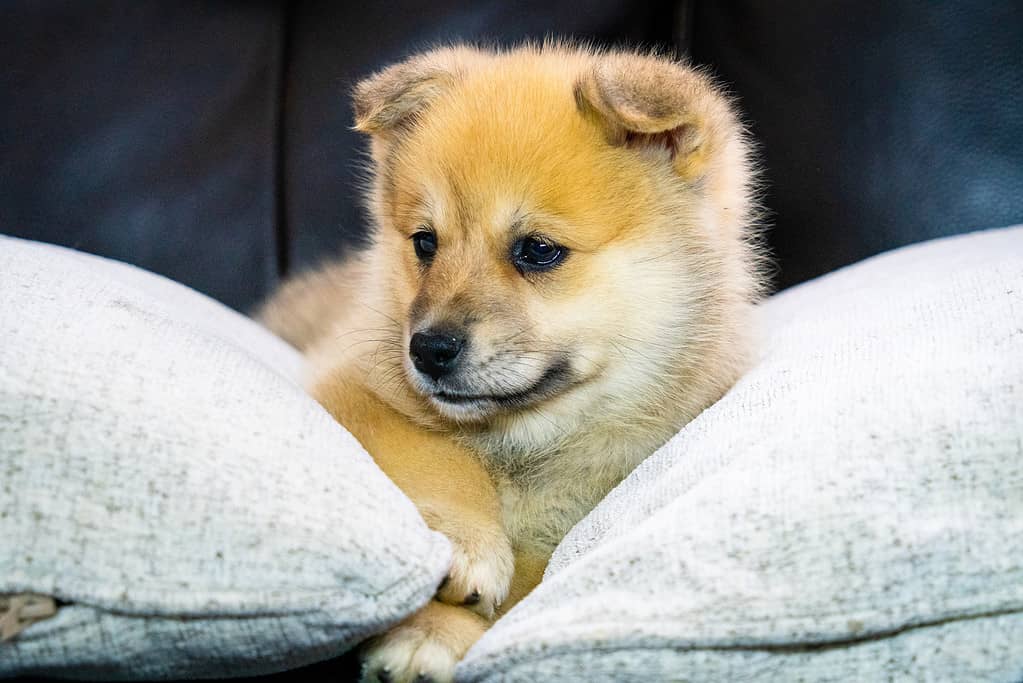
Black and white are the popular Pomsky colors, but they are also common in beige, tan, gray.
©RoschetzkyIstockPhoto/iStock via Getty Images
Similar to their parents, Pomskies shed a lot. Owners will have to vacuum the floors and pick up loose hair throughout the year depending on what type of coat the puppy inherits. Pomeranians do not shed as often as huskies, but a silky husky coat will shed more often.
Owners should brush their Pomsky with a slicker or wire brush every day to remove knots and stimulate the skin cells for better coat care.
Additionally, owners should create a schedule for brushing their dog’s teeth with pet-safe toothpaste and dental gels to prevent gingivitis and plaque growth. Small-breed dogs like Pomeranians commonly suffer from bad breath and tooth decay because of poor dental hygiene and their ability to rummage through the garbage for food scraps.
Owners can take their Pomsky to the groomer once a month for a haircut and nail trimming as well. Keep baths to a minimum, unless they are exceptionally filthy from rolling in mud or covered in dirt.
Health Care
Puppies are like children, and they will need routine check-ups to keep them healthy. Typically, Pomskies are a healthy dog breed because of their mixed genetics. They have a lower chance of developing hereditary diseases from either parent compared to pure breeds.
The average veterinary office costs can be:
| Service | Explanation | Cost |
|---|---|---|
| Wellness check | A full-body examination covering eyes, ears, nose, legs, weight, mouth, tail, hair, skin, paws | $60-$100 |
| Bloodwork | A diagnostic test measuring blood values, nutrition levels, overall health, and early signs of illness or disease | $100-$200 |
| Urinalysis | A diagnostic test measuring kidney value, pee quality, and early signs of kidney or bladder disease | $60-$70 |
| Fecal | Diagnostic testing to determine gastrointestinal issues or parasites like worms | $60 |
| Vaccinations | Booster shot given to pets to help develop immunities to contagious diseases (rabies, Bordetella, distemper) | $20-$60 each |
| Accuplex / 4DX | Diagnostic blood test to detect tick-borne diseases like Lyme | $60 |
In total, an owner can expect to pay approximately $500 per office visit.
Pet insurance is available for owners to help manage veterinary costs and emergency visits.
The most common health problems for Pomskies include:
- Allergies
- Luxating patella
- Hip dysplasia
- Obesity
- Separation anxiety
Other Expenses
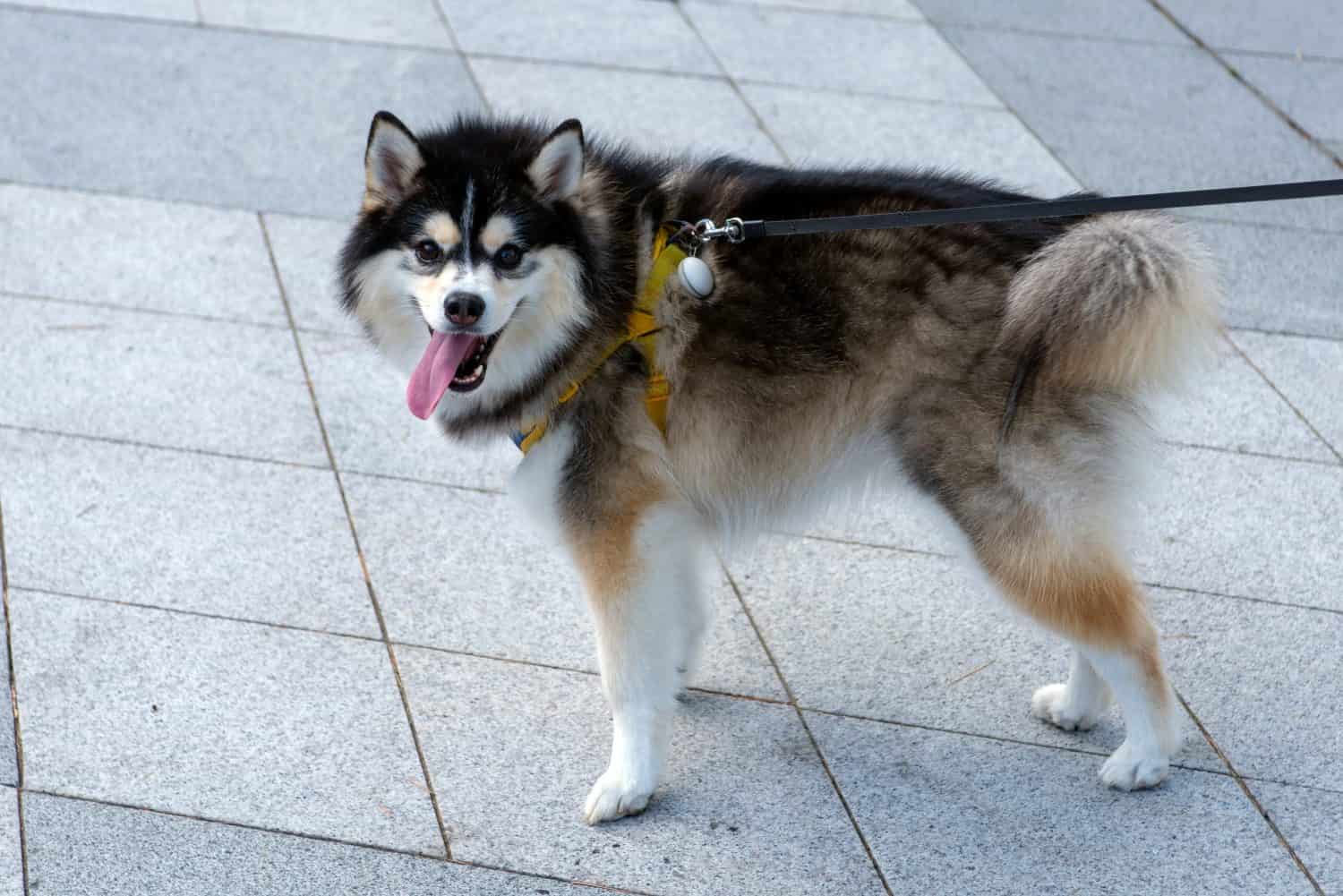
Puppies with heterochromia are more expensive because it is a trait that is difficult to replicate.
©AC Parsons/Shutterstock.com
Pomskies require ongoing care outside of veterinary visits and grooming appointments.
Pet parents must calculate:
- Monthly food budget (including treats)
- Toys
- Clothing (leashes harnesses, boots, coats, costumes)
- Specialized training (AKC training, advanced training classes)
Owners love to spoil their dogs with the nicest and finest. Clothing is optional, but many Pomsky owners love to dress their dogs up for the holidays.
Are Pomskies Hypoallergenic
No, Pomskies are not good for owners with dog allergies. Even if the individual Pomsky does not shed much, dog allergies can be triggered by saliva and urine.
Owners with dog allergies should not adopt this dog or must learn to live with their allergic reactions.
Do Pomskies Get Along with Others

Pomsky mothers will have a litter of two to six puppies at a time.
©Alina Ziabrieva/Shutterstock.com
Yes, pomskies are very social animals and will be thrilled to live with a littermate or other animals in the house. Pet owners are encouraged to socialize their Pomskies early, so they do not develop defensive or aggressive attitudes toward other animals.
Friendly Pomskies can have a good relationship with large, medium, and small breed dogs, as well as cats and birds. Dogs are pack animals and will see other animals in their pack as family once they are comfortable.
Additionally, having a littermate or other animals in the house will help vent out Pomsky’s excess energy and decrease their risk of separation anxiety because they have someone else to keep them company.
Are They Good with Children
Absolutely! Pomskies are gentle and excitable puppies that love attention from everyone in the family. Their small size makes them great for children to learn how to take care of a dog by taking them on guided walks, playing with them in the yard, learning to brush their coats, and offering unconditional love and companionship.
Final Answer: Do Pomskies Make Good Pets?

Pomskies grow very attached to their owners, with some forming separation anxiety when left alone.
©Victor Ataide/iStock via Getty Images
Pomskies are excellent breeds and will make a loving addition to the family.
Owners wanting to adopt a Pomsky must be:
- Energetic
- Patience during training sessions
- Financially stable enough to afford food, grooming, and veterinary bills
- Able to provide tender loving care
- Available for two to three walks daily of 15-30 minutes
- Allergy free when it comes to dogs
As long as owners can meet these basic demands, then a Pomsky will make a great pet.
Ready to discover the top 10 cutest dog breeds in the entire world?
How about the fastest dogs, the largest dogs and those that are -- quite frankly -- just the kindest dogs on the planet? Each day, AZ Animals sends out lists just like this to our thousands of email subscribers. And the best part? It's FREE. Join today by entering your email below.
Thank you for reading! Have some feedback for us? Contact the AZ Animals editorial team.

